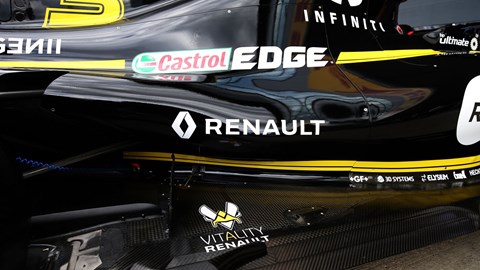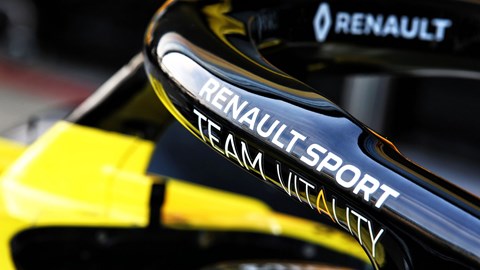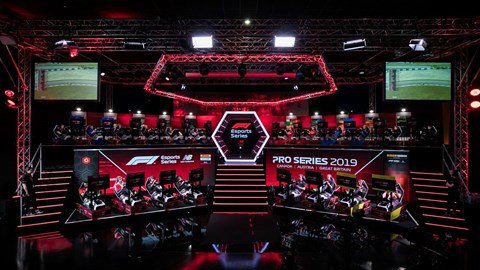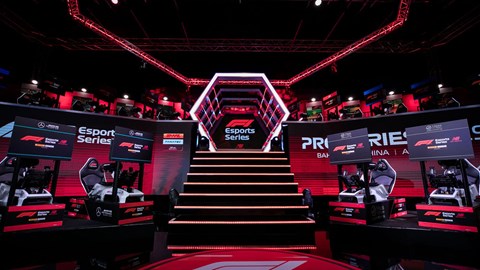► Esports gains traction
► And gets some corporate backing
► How it could be another form of marketing – alongside F1
Esports is a word which invokes two vastly different reactions. For a growing number of people, it’s a profession, or a popular form of entertainment. For everyone else, it’s an alien world, and one even more foreign than the already-distant sphere of gaming.
But for the last few years, the orbits of physical sports and esports have begun to align, and car brands are also starting to see the opportunity to tap into an audience they’d never otherwise have access to. Basically, there’s now even more money in it.
This trend is arguably most evident in the motorsport arena where the link between the two is arguably more tantalising than in any other type of esports: racing sims are considerable closer to real racing than games such as FIFA are to real football. This mean there’s a clear – albeit lightly treaded – route between esports and real racing.
It’s got official backing, too. Alongside the GT world championships which we’ve already reported on, the FIA has also approved an F1 esports championship – and this year it featured all 10 teams. There’s even a draft streamed on Twitch, YouTube and any other platform you care to think of.

F1 esports isn’t just a branded team t-shirt either – the partnership between esports’ Team Vitality and Renault Motorsport has seen eSports drivers and F2 drivers share facilities, use the same trainers and learn identical racing techniques. To find out about the growing link between esports and ‘real’ motorsport, we went to Enstone, home of Renault F1, and now Team Vitality’s Renault F1 esports team.
Team Vitality X Renault F1
Before we get into what an F1 team can bring to a gaming team, it’s worth talking about what Team Vitality can bring to Renault; this’ll come as no surprise, it’s all about marketing to new demographics. Look at the esports audience numbers from Team Vitality below, and it’s clear to see the appeal for Renault:
- 26% 10-20 years
- 52% 21-35 years
- 22% > 35 years
- 50% from the Asian market
Not only does esports tap into an age range previously inaccessible for a legacy car brand such as Renault, it does so within the world’s fastest-growing market: China.
The reasons for Renault teaming up for Team Vitality are obvious – but what does a car brand offer an esports team, and how has the experience been so far? After all, the team is already involved in nine games, has 50 players from 14 different nationalities, and has a budget of €12 million a year. The quick answer? The authority, ethos and approach of a successful F1 team, and one that’s – in some guise – powered both Schumacher and Alonso to world titles.
Working with Renault
‘I think it’s a win-win relationship on many fronts actually,’ says Fabien Devide, president and co-founder of Team Vitality and a long-time esports figure in his own right. ‘Because first their big brand, that’s helps you know. When you create a partnership with someone successful, someone well known worldwide, they will give you a lot of credit. This kind of brand reassures everyone you know, reassures players, reassures agents, reassures other brands, reassures the audience.
‘If someone who doesn’t know anything of eSports is looking at our jerseys and they see Renault, they will see OK this is serious,’ he adds. ‘We also secured Adidas, so it’s impressive and it’s also given us a lot of credit and guarantee the ability to build a serious business.’

But Renault’s support extended to more than just brand recognition or finance. After a poor first year, Team Vitality began to lean on the expertise of Renault’s F1 team, and soon the two were more joined-up than before.
‘Our first mistake was during the first year we thought it was a normal esports licence,’ admits Devide. ‘It took us maybe one year to understood everything properly: like to understand people need the data, needed a preparation, needed to work on projects. We needed to understand every step [the players] need, and also to have a competition during practice,’ he adds.
This year, Team Vitality became less like an esports team and more like a virtual F1 team, with everything from training to data points being taken care of by Renault staff. On a tour of Enstone, we saw the F1 team’s mission control room – where a satellite team of engineers sift through data during racing weekends – populated with F1 2019 data. It’s got that serious.
‘We said okay, we don’t know anything basically,’ Devide admits. ‘[The first year] was a massive failure, let’s admit it. So, right now we need to learn from you guys. What you’re doing day-to-day in real F1, to understand what we can improve in any way. So they said okay, so we will give you some access. So we’ve been using the facilities. We’ve done practice based on the physical tests, speed tests etc.’
Driver training
‘What we provide is structure,’ explains Mia Sharizman, Renault Sport academy director. ‘For them beforehand, it was wake up in the morning, go nine hours a day, stay in the room, eat and then go off,’ he says. ‘It was about practice, practice, practice, but now we incorporate the structure we do for racing drivers, and it allows [the players] to follow and benchmark with the racing drivers.
‘The fitness side is more connected to the mental side, if you think about it, they don’t really need to be fit. We benchmark them with the race drivers, and it gives the esports players a different level of confidence, and a level of perspective for close attention.’

Keeping the talent
With motoring eSports so much like the real thing, the possibilities for jumping between the two are greater than in most other esports. In Team Vitality alone, driver Jarno Opmeer competed in the F1 esports championship – where he finished fourth – but was previously a Renault Academy driver. Elsewhere, Jann Mardenborough earned his real drives through Gran Turismo. It works the other way, too: F1 drivers such as Max Verstappen and Lando Norris regularly race competitively online.
But if you’re an esports team owner, are you not worried about your drivers leaving the nest for a real race seat? Davide certainly is: ‘Jarno used to be an Academy driver in Renault and is one of the biggest talents in Formula eSports,’ he answers. ‘So for sure you want to secure him and keep him. But at the same time, these guys are driven by the passion, you know, the will to be a driver.
‘So at some point, I won’t be ashamed if he achieved one of these dream goals – in a way, we’d be happy for him,’ Devide says. ‘For sure it would be really bad for us, but the strength of eSports and in sport in general, is the capacity and ability to detect and discover people.’
Developing the talent
Renault is happy to see F1 eSports as a parallel marketing tool to Formula One: after all it’ll keep the brand in the limelight to a totally new and growing audience. But for the actual Renault Motorsport director, eSports isn’t a parallel activity, it’s additional tool to sift through talent. Even at esports events, the overall endgame of virtual racing – whether it’s marketing or driver development, or both – is still up for debate.

For Mia Sharizman, the director of the Renault driver academy, an esports program could be about sifting through the cream of the virtual world and getting them behind the wheel of a single-seater as soon as physically possible. And with that in mind, he believes age brackets in eSports would make that imminent, ongoing search for the next Lewis Hamilton slightly easier.
‘If you found some prodigy, and at eight years old they werebeating everybody who was 15, 16, 18, that something that maybe could then lead to something in real life. And then you still have to put them into karting as well.
‘It is not easy to develop a 20-year-old who is good at esports to go to Formula One,’ says Sharizman. ‘But if we found a 10-year-old who is good at esports, they could be potentially be developed into a higher level of motorsport. So age is still a factor.’
The F1 esports championship will return in 2020.